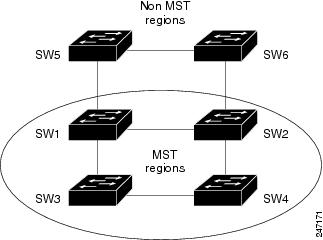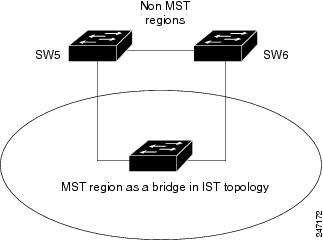Multiple Spanning Tree Protocol
|
Feature Name |
Release Information |
Feature Description |
|
Multiple Spanning Tree Protocol |
Release 24.4.1 |
Introduced in this release on: Fixed Systems (8700) (select variants only*) * The MSTP functionality is now extended to the Cisco 8712-MOD-M routers. |
|
Multiple Spanning Tree Protocol |
Release 24.3.1 |
Introduced in this release on: Fixed Systems (8200, 8700); Modular Systems (8800 [LC ASIC: P100]) (select variants only*) * The MSTP functionality is now extended to:
|
|
Multiple Spanning Tree Protocol |
Release 24.2.11 |
Introduced in this release on: Modular Systems (8800 [LC ASIC: P100]) (select variants only*) The Multiple Spanning Tree Protocol (MSTP) enhances network efficiency by allowing the creation of multiple, independent spanning trees over the same physical network. This flexibility enables customized configuration of parameters for each spanning tree, selection of different root bridges or paths, and the ability to block or unblock specific physical interfaces for different trees. * This functionality is extended to routers with the 88-LC1-36EH line cards. |
The Multiple Spanning Tree Protocol (MSTP) is a Spanning Tree Protocols (STPs) variant that allows you to create multiple and independent spanning trees over the same physical network. You can configure the parameters for each spanning tree separately. You can select different network devices as the root bridge or different paths to form the loop-free topology. Therefore, you can block a given physical interface for some of the spanning trees and unblock for others.
After setting up multiple spanning tree instances, you can partition the set of VLANs in use. For example, you can assign VLANs 1–100 to spanning tree instance 1, VLANs 101–200 to spanning tree instance 2, VLANs 201–300 to spanning tree instance 3, and so on. Since each spanning tree has a different active topology with different active links, this has the effect of dividing the data traffic among the available redundant links based on the VLAN—a form of load balancing.




 Feedback
Feedback